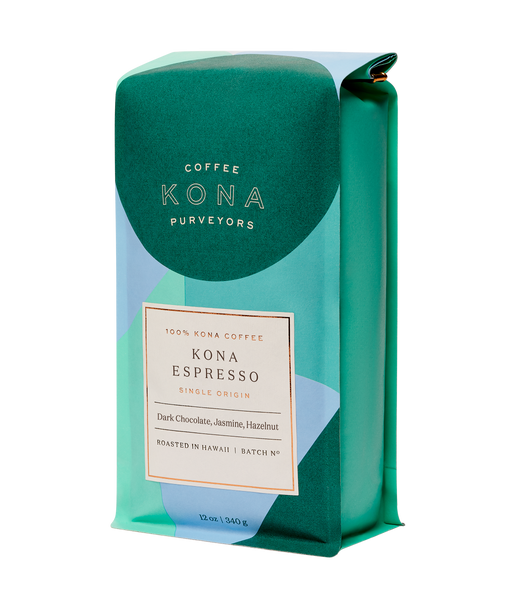Exploring the Abundant Flavors of Coffee Beans: a Deep Dive Into Coffee and Blended Coffee Beans
When you explore the rich tastes of coffee beans, you uncover a complex globe where each range brings its very own character to your cup. As you browse via the art of espresso and the creative thinking behind combined coffees, you'll start to value the subtleties that make each sip unique.
The Origins of Coffee Beans: Exploring Terroir and Flavor Profiles
When you take a sip of coffee, you're not just enjoying a drink; you're experiencing a rich tapestry of tastes shaped by the beans' origins. Each region produces special taste accounts affected by elevation, climate, and soil. Beans from Ethiopia frequently break with brilliant, fruity notes, while those from Colombia have a tendency to use a balanced, nutty sweetness.
As you discover various origins, you'll discover exactly how terroir-- the ecological elements impacting a plant-- plays a vital role - Single Origin Espresso. The same coffee selection can taste substantially different depending upon where it's grown
When you consider these variables, you start to value the complexity behind your mug. Each sip narrates of the land and the farmers who nurtured the beans. So, next time you delight, think of the trip your coffee took prior to it reached your hands, and relish those intricate flavors that show its origin.
Comprehending Espresso: The Art and Scientific Research Behind the Mixture
When you assume regarding coffee, it's not almost the solid flavor; it's additionally concerning the techniques that bring it to life. Recognizing exactly how various prep work techniques impact taste can transform your developing experience. Allow's discover the complexities of espresso prep work and uncover the one-of-a-kind flavor profiles that make each mug special.
Espresso Preparation Methods
Coffee preparation is both an art and a scientific research, combining accurate methods with a deep understanding of coffee. To start, you'll wish to select premium, freshly roasted beans and grind them finely for optimal removal (Single Origin Espresso). The grind dimension is essential; as well crude, and your espresso will be weak, as well great, and it'll be bitter
The outcome needs to be an abundant, velvety espresso with an attractive layer of crema on top. With method, you'll grasp these strategies.
Taste Profiles Clarified
The world of espresso uses an abundant tapestry of flavor accounts that can raise your coffee experience. Light roasts typically showcase brilliant acidity and vibrant flavors, while dark roasts present deeper, bolder tones.
Recognizing these accounts aids you pick the ideal coffee for your taste buds. Experimenting with different blends can reveal shocking mixes. For example, a well-crafted blend might integrate the brilliant notes of an Ethiopian bean with the abundant, chocolatey undertones of a Brazilian bean. Embrace the trip of finding espresso's varied flavors, and you'll change your coffee routine right into an exciting adventure.
Processing Techniques: Just How They Influence Taste and Aroma
While it may seem that the origin of coffee beans is the most substantial consider identifying their flavor and fragrance, the processing techniques used post-harvest play a similarly necessary role. You'll discover that these methods can substantially modify the final preference profile of your mug.
For example, the washed process eliminates the fruit from the beans before fermentation, typically causing a cleaner, brighter flavor. The all-natural process leaves the fruit intact throughout drying out, resulting in a sweeter, fruitier profile.
Other methods, like honey processing, strike a balance, allowing some fruit mucilage to remain, supplying an unique intricacy.
Each processing technique interacts with the beans' intrinsic characteristics, enhancing or silencing details flavors and scents. So, when you drink that espresso or mixed coffee, bear in mind that the journey from cherry to mug is affected not simply by beginning however additionally by exactly how those beans were processed.
Roasting Techniques: Opening the Complete Possible of Coffee Beans
Roasting methods are necessary for revealing the complete capacity of coffee beans, as they transform raw, environment-friendly beans right into the fragrant, flavorful coffee you delight in. The option of toasting technique-- light, medium, or dark-- significantly influences taste profiles. Light roasts protect the beans' natural level of acidity and fruity notes, while medium roasts balance sweet taste and splendor. Dark roasts, on the various other hand, my review here highlight vibrant, great smoky tastes.
A slower roast at reduced temperature levels permits for intricate flavors to establish, while a quicker roast can magnify anger. By mastering these techniques, you'll expose a world of flavor, elevating your coffee experience to new elevations.
The Magic of Blended Coffee: Producing Unique Flavor Experiences
Creating an unique taste experience with blended coffee can transform your early morning routine into an expedition of preference. By incorporating various beans from different areas, you can disclose a harmony of flavors that elevate your mug to brand-new elevations. Each blend offers a distinct account, stabilizing acidity, sweet taste, and body to produce something really unique.
When you choose a mix, you're not simply selecting a coffee; you're selecting a trip throughout diverse landscapes and cultures. Experimenting with different combinations allows you to find your personal faves, whether you delight in fruity notes or rich, chocolatey undertones.

Sampling Notes: Identifying the Subtleties in Your Mug
As you drink your coffee, you could see a spectrum of tastes dancing on your taste buds, each disclosing the complexities of the beans. You may taste the bright level of acidity reminiscent of citrus or the deep, rich notes comparable to dark delicious chocolate. The sweet taste could stimulate honey or caramel, balancing the total profile wonderfully.
Take note of the body of the coffee-- does it really feel airy and light, or is it full and velvety? The finish, too, offers hints; a remaining aftertaste might mean nuttiness or floral touches.

Don't forget to discover the special features of different beginnings, as each area passes on distinct flavors - Single Origin Espresso. As an example, Ethiopian coffees often present fruity notes, while Colombian beans could display a more spherical sweetness. By identifying these nuances, you'll deepen your appreciation for every cup, boosting your coffee experience to new elevations

Brewing Methods: Making Best Use Of Taste Extraction for every single Bean
When you check out the various brewing methods, you'll discover that each method can substantially impact the taste account of your coffee. From French press to pour-over, each approach essences various substances, improving or silencing certain notes. As an example, using a French press enables oils to stay in the brew, creating a richer taste, while pour-over highlights clearness and brightness.
Temperature and grind dimension likewise play important functions. A coarser grind functions best for chilly brews, while a great grind is suitable for espresso. Try out water temperature-- between 195 ° F and 205 ° F-- can expose concealed tastes, too.
Do not fail to remember regarding soaking time; a fast extraction can result in sour notes, while over-extraction might yield resentment. company website By adjusting these variables, you can optimize flavor extraction and truly boost your coffee experience. Appreciate the journey of finding what approach best suits your taste buds!
Often Asked Concerns
What Is the Perfect Water Temperature for Brewing Coffee?
The optimal water temperature for developing coffee's in between 195 ° F and 205 ° F. If you use water that's as well warm, you'll over-extract flavors; too cold, and you won't remove sufficient. Go for that sweet area for the finest mixture!
Exactly How Does Grind Size Influence Coffee Taste?
Grind dimension significantly affects coffee flavor. Finer grinds extract more oils and tastes, leading to a bolder taste, while coarser grinds return a lighter flavor. Adjusting work size helps you attain your wanted coffee account.
Exist Wellness Perks Surrounding Drinking Coffee?

What Is the Difference In Between Arabica and Robusta Beans?
Arabica beans are smoother and sweeter, typically including fruity tastes, while robusta beans are stronger with a bitter taste and greater caffeine content. You'll see these distinctions in fragrance and brewing experience.
Exactly How Can I Store Coffee Beans for Freshness?
To keep coffee beans for freshness, maintain them in a closed container, away from light, warmth, and moisture. You'll maintain their flavor much longer if you only grind what you need right prior to brewing.
Discovering the Rich Flavors of Coffee Beans: a Deep Dive Into Coffee and Blended Coffee Beans.
When you explore the abundant flavors of coffee beans, you reveal a complex world where each range brings its own personality to your cup.When you take a sip of coffee, you're not just delighting in a drink; you're experiencing an abundant tapestry of flavors formed by the beans' origins.Roasting strategies are essential for disclosing the complete capacity of coffee beans, as they transform raw, green beans right into the fragrant, savory coffee you take pleasure in.As you drink your coffee, you might notice a range of tastes dancing on your taste buds, each disclosing the complexities of the beans.